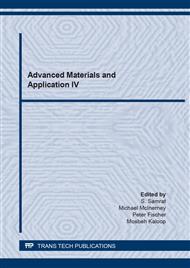p.111
p.117
p.123
p.131
p.139
p.145
p.151
p.157
p.165
Comparison of Flexural Behaviour of Composite FRP with UHPC I-Beam Using Finite Element Analysis
Abstract:
Concrete can be considered as the ultimate construction material since it is the most widely used in the construction materials due to its extensive strength and reasonable cost. Recent years, large investments have been spent for studies on the new advanced materials to enhance the performance and functionality of conventional concrete especially for bridge structure. The application of Ultra-high-performance concrete (UHPC) as advanced materials in bridge application is well established since it able to construct 100m long highway bridge without reinforcement, while fiber reinforced polymers (FRP) required some studies on the optimum composition for bridge application. In this paper, A33 composite FRP from the previous research is studied under 4-point bending test to study the flexural behavior and compared to the UHPC. Three-dimensional finite element analysis of FRP and UHPC I-beam are modelled using Abaqus software to determine and compare the beam deflection and stress. The deflection and stress UHPC and FRP I-beam model being validated with experimental result of four-point bending test and theoretical of equivalent method in previous research. The results from the analytical and experimental are compared and shows good agreements. The presented modeling offers an economical and efficient tool to investigate the structural performance of FRP and UHPC in construction materials.
Info:
Periodical:
Pages:
151-156
Citation:
Online since:
August 2021
Price:
Сopyright:
© 2021 Trans Tech Publications Ltd. All Rights Reserved
Share:
Citation:


